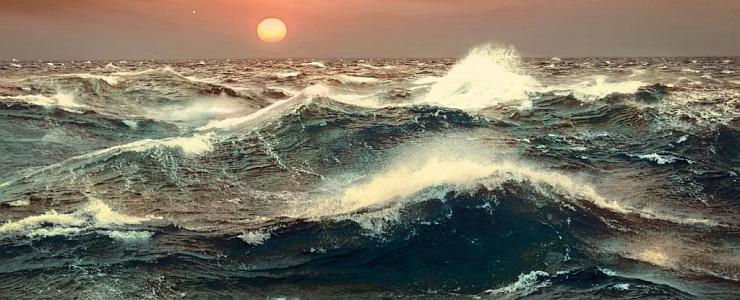
An artistic impression of the surface of the candidate water world exoplanet TOI-1452b. (Benoit Gougeon/Université de Montréal)
ScienceAlert.com reports the discovery of an exoplanet just 100 light-years from Earth that appears to be the best candidate yet for a sloshy, water-covered ocean world.
It’s called TOI-1452b, and measurements of its size and mass suggest a density profile consistent with a global liquid ocean. Scientists believe that worlds like this are possible, but they haven’t yet conclusively found one.
“This paper reports the discovery and characterization of the transiting temperate exoplanet TOI-1452b,” writes a team of researchers led by astronomer Charles Cadieux of the University of Montreal in Canada in a paper published in The Astronomical Journal.
“The results of our interior modeling and the fact that the planet receives modest irradiation make TOI-1452b a good candidate water world.”
It’s easy to see why TOI-1452b evaded detection until now, in spite of its relative closeness to the Solar System.
The exoplanet was found orbiting one of a close binary pair of small, dim red dwarfs, separated by a distance of just 97 astronomical units. That’s so close together that the two stars appear to be one.
It’s on an 11-day orbit with its star, which seems insanely close to us, with our comparatively leisurely 365-day orbit. However, because the star is so cool and dim compared to the Sun, this places the exoplanet bang in the middle of the star’s temperate zone. This is not so far from the star, out in the cold, that any liquid water on its surface would freeze, nor so close that the water would evaporate under the star’s heat.
“TOI-1452b is one of the best candidates for an ocean planet that we have found to date,” Cadieux says. “Its radius and mass suggest a much lower density than what one would expect for a planet that is basically made up of metal and rock, like Earth.”
They modeled the exoplanet’s interior composition and determined that as much as 30 percent of its mass could be water.
For comparison, water makes up less than 1 percent of Earth’s mass; TOI-1452b’s composition seems closer to that of water moons Europa in orbit with Jupiter and Enceladus in orbit with Saturn.
